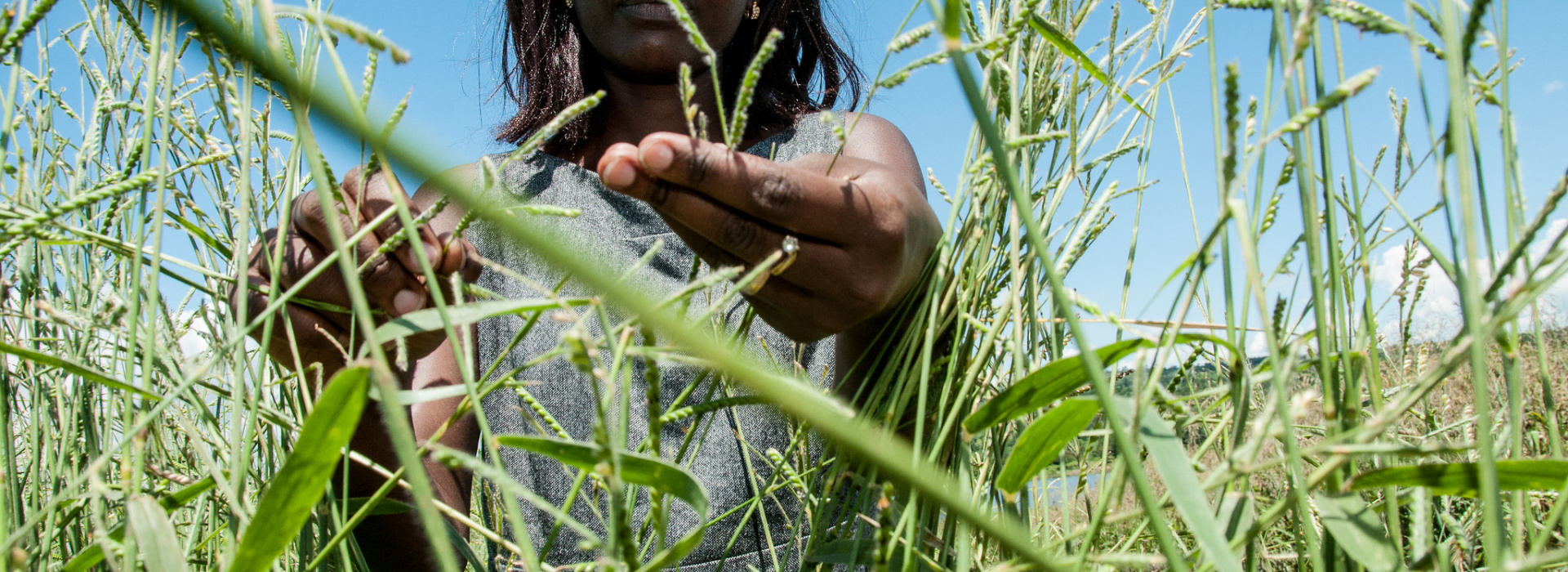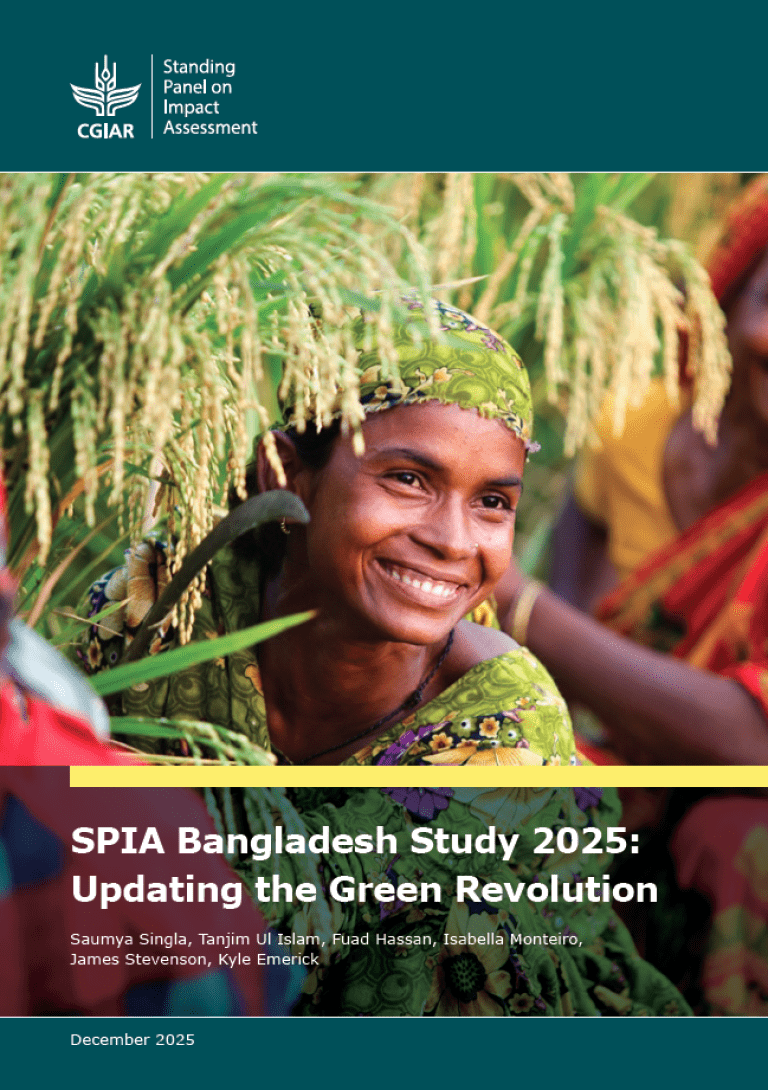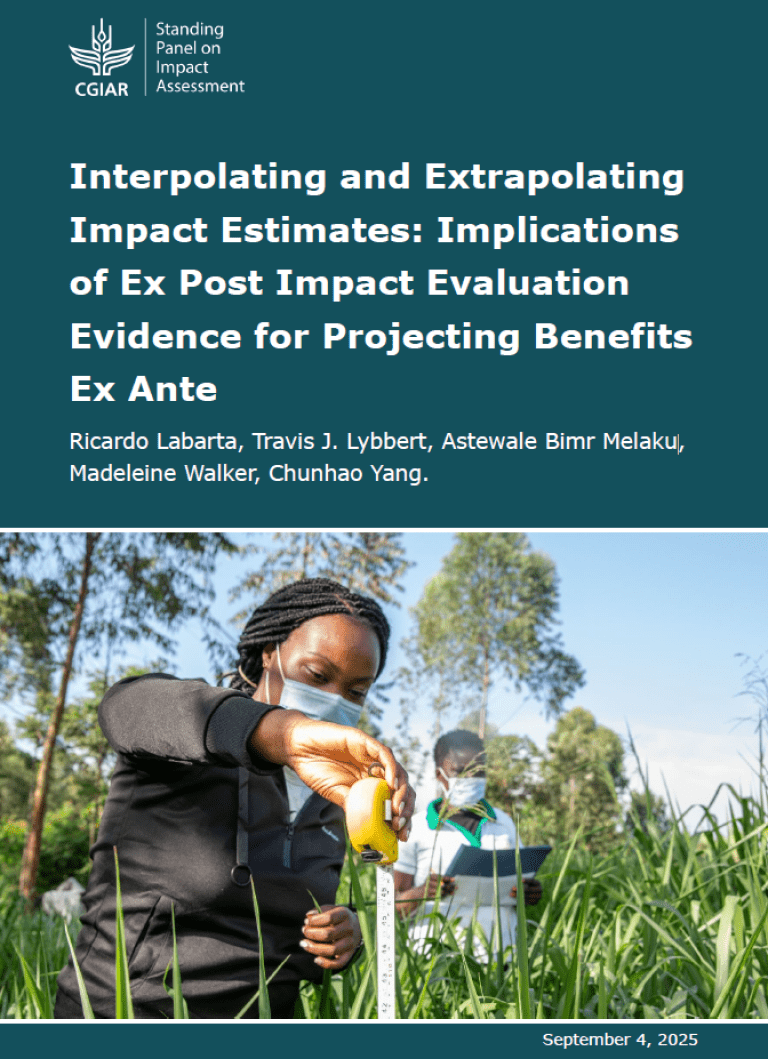A call for cases for learning-oriented impact studies*
Background and scope of the call
The CGIAR Standing Panel on Impact Assessment (SPIA) is launching a pre-call to identify CGIAR innovations that can, at a later stage, be tested in impact evaluations focused on the effectiveness of alternative diffusion strategies. The final aim of this pre-call is to identify opportunities that could be developed into proposals for studies that can causally identify whether diffusion strategies specifically adapted to the characteristics of innovations can lead to more sustained adoption.
Low agricultural productivity is a key challenge in many parts of the developing world. The development of agricultural innovations by the various CGIAR centers and research programs is therefore believed to hold great promise. Yet many of these innovations have not diffused through their intended target populations at any significant scale, raising questions regarding the pathways between the development of innovations and their widespread diffusion.
Multiple constraints in the enabling environment may explain some of the puzzle of limited adoption and diffusion of innovations that are believed to be valuable for farmers. Many studies of agricultural technology adoption focus on the constraints generated by the enabling environment. By contrast, this set of studies proposes to start from the characteristics of the innovations themselves and develop and test diffusion strategies that reflect how the specific aspects of the innovations are expected to foster or hamper widespread and sustained adoption and use.
Different innovations have different traits and profiles of expected costs and benefits, all of which likely affect a farmer’s decision to adopt and sustain their use. Even where innovations are ultimately beneficial for adopters, there may be aspects of an innovation that impede adoption and diffusion. These can vary substantially, for instance:
- The benefits from adopting some innovations may take time to be realized, potentially generating more costs than benefits in the years until they bear fruits (e.g. soil fertility improvements or tree planting)
- Some innovations have highly heterogeneous benefits depending on local conditions, and it may take time to fine-tune the proper combination of inputs adapted to each site (e.g. precision agriculture, integrated pest management, or sustainable livestock intensification)
- Certain benefits or costs are not easily perceived (e.g biofortified crops)
- Innovations can be complex, data intensive or demanding in physical strength or human or social capital, and thus have heterogenous benefits depending on capacities of individuals or communities that are expected to adopt them (e.g., mechanical innovations such as plows or pumps; institutional or market innovations, decision support tools)
Many of the innovations that the CGIAR is counting on in coming years to improve food security and nutrition under changing climatic conditions may not be “easy” to take up and use. Therefore it is essential that researchers not only be able to demonstate that the innovations they develop deliver the desired benefits to adopters (substantially in excess of costs) but also that that they provide users and development partners with practical, evidence-based guidance on cost-effective approaches to scaling the innovations to increase likelihood of widespread, sustained adoption ultimately leading to impact.
Process and requirements
To submit a candidate innovation, please answer the following questions in no more than 2 pages (total, not per question).
1. Briefly describe the innovation
2. Document the contribution of the CGIAR in developing the innovation
3. Why is this innovation a priority for the center/CRP?
4. What is the evidence that the innovation is promising?
5. What particular aspects of the innovation do you believe need to be taken into account in the diffusion strategy? And does any prior research document these aspects?
6. Are you aware of any upcoming opportunities (e.g., projects, development partners) in which the innovation could be disseminated and different diffusion strategies tested?
This call is open to all CGIAR centers and programs and there is no limit on the number of submissions per center or program.
The studies to be conducted under this call are intended to complement not replace the analyses of potential impact and adoptability conducted as part of the research process itself. Therefore, only innovations at Stage 3** (available/ready for uptake) or 4 (uptake by next user) should be submitted.
Suggestions for innovations should be submitted to: spia.cgiar.org by November 15, 2019.
SPIA will review all submissions, in consultation with key stakeholders, to identify innovations that could form part of a portfolio(s) of studies whose results can inform both CGIAR’s research agenda and partner development investments. SPIA will then work with the center/CRPs, outside researchers, and development partners towards the design of impact studies. All studies funded under this call must be completed by the end of 2023.
* The CGIAR Standing Panel on Impact Assessment (SPIA) has a mandate to generate external, independent evidence on 1) the long-term, large-scale impacts of past CGIAR research on development outcomes and 2) adoption and impacts of high-priority innovations, including from recent research, where results can inform both scaling up strategies and system-level priority setting.
** For more on stages of innovations or examples of innovations at different stages see here



